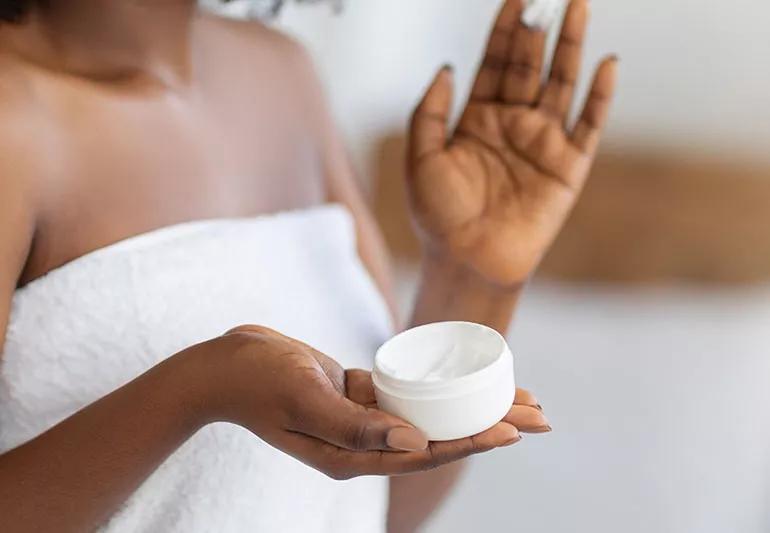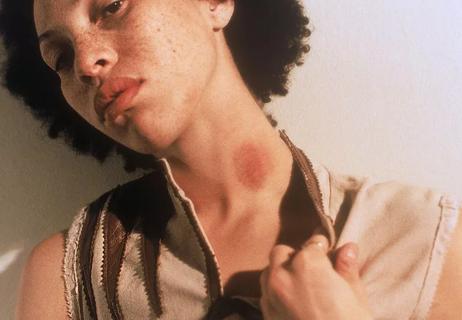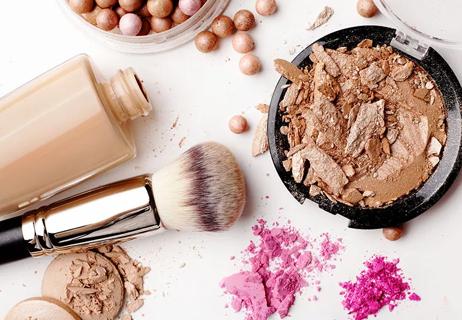This important skin care ingredient helps protect your skin and keep it moisturized

When it comes to all of the super-sciencey terminology related to your skin, it can be so hard to know what’s what. But next time you’re browsing the moisturizer aisle, keep in mind that ceramides are one ingredient worth keeping an eye out for.
Advertisement
Cleveland Clinic is a non-profit academic medical center. Advertising on our site helps support our mission. We do not endorse non-Cleveland Clinic products or services. Policy
Dermatology physician assistant Clara Wilson, MS, PA-C, explains what ceramides are, why they’re so important for your skin and what to look for when you’re buying a moisturizer that includes them.
Ceramides (pronounced “sair-uh-mydes”) are lipids that make up about 50% of your epidermis, which is the outer layer of your skin.
“Natural ceramides are those found in the skin of humans and other animals,” Wilson explains. “Synthetic ceramides, which are human-made, are more stable and commonly used in skin care products.”
As you age, your skin can’t replenish its natural ceramides as quickly as it did when you were young. That’s why synthetic ceramides are added to moisturizers, serums and other products — to give your skin the boost it needs.
Ceramides are added to skin care products to help moisturize your skin, replenish your skin barrier and just generally keep your skin looking and (feeling!) healthy.
Wilson delves deeper into what ceramides do for you.
Your skin barrier is your top layer of skin, made up of dead cells, proteins, fats and lipids — including natural ceramides.
“Ceramides are essentially the glue that holds our skin cells together to form a healthy skin barrier,” Wilson says. “Using skin care products with added ceramides can restore optimal levels of these lipids.”
Advertisement
Keeping your skin moisturized is important for everyone, but it becomes especially critical as you age. With time, your skin becomes thinner and less elastic, which causes it to lose moisture more easily than in your younger years.
But ceramides help lock in moisture to keep your skin soft and plump.
“Aging and certain skin conditions, like eczema, involve decreased ceramide levels, which can result in dehydrated or itchy skin,” Wilson says. “Products with ceramides help keep your skin healthy and hydrated.”
Think about your skin barrier as a suit of armor, blocking bad stuff from getting through to the delicate living organism underneath. And ceramides are one of the knights in shining armor that do the hard work of keeping it safe.
“Ceramides help keep out harmful elements, like pollution, toxins and allergens,” Wilson says. The stronger and more intact your skin barrier is, the harder it is for these elements to penetrate, helping to keep your skin healthy.
Sold on ceramides? Here’s some more good news about them: They’re not hard to find.
“Ceramides are a common ingredient in many over-the-counter serums, lotions and creams,” Wilson says. “A few common examples include CeraVe®, Cetaphil® and Eucerin®.”
Many products advertise front and center that they feature ceramides, and you can also check ingredient labels. There are 12 types of ceramides, but these are the three most common ones:
To maximize your skin health, pair ceramides with other good-for-you ingredients in your skin care products. They work well with:
But what does that mean for you, exactly? To help you figure it all out, Wilson shares some specific ingredients that work well with ceramides. Look for:
One final word of wisdom for using products with ceramides in them: “Moisturizing products are best absorbed onto damp skin,” Wilson notes. “Aim to apply your moisturizer within three minutes of showering or washing your face.”
Advertisement
Learn more about our editorial process.
Advertisement

This type of bruise might benefit from warm compresses, but time is really the healing key

Look for a formula with either benzoyl peroxide or salicylic acid

They work for some skin types but are less efficient — and messier — than shaving

Compared to other tanning methods, they’re the safest choice — but they’re not entirely risk-free

Keeping brushes clean and new can prevent bacteria growth

Get unstuck with a few home remedies

Most recommended precautions center around minimizing bruising or swelling

Type 2 diabetes isn’t inevitable with these dietary changes

Applying a hot or cold compress can help with pain